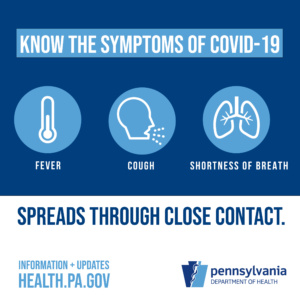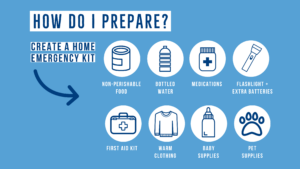How Do Lititz Restaurants Rate on State Inspections?
Popular Eatery Tops List of Lititz Restaurants Most Often Found Out of Compliance by PA Food Inspectors
As Lititz residents reel from revelations of Pennsylvania Food Code violations at a local restaurant where deer heads and other parts were found, some have wondered how restaurants in town rate in terms of state standards for health and cleanliness. This article is the first in our series about the state inspections results of Lititz restaurants.
Most Serious Risk: The “Out of Compliance” Designation
Restaurants deemed “out of compliance” at the time of inspection are sometimes temporarily closed on the spot, as was the case with New China House in December of 2015. That designation is reflective of significant health hazards to consumers at the time of inspection.
How is it determined whether a restaurant is out of compliance? Dr. Lydia Johnson, director of the Bureau of Food Safety and Laboratories for the Pennsylvania State Department of Agriculture, put it quite simply in an interview yesterday: “It’s the number of risk factors.”
State inspectors, referred to as sanitarians, are given general guidelines to determine whether a violation is a risk factor or a general housekeeping issue.
“Based upon the number of violations in each category, there’s a total and that’s what will put them in compliance or out of compliance,” said Johnson.
According to Dr. Johnson, not all of violations are weighted the same.
“There are a lot of things that are higher risk factors, such as are foods held at the appropriate temperature, are the food contact surfaces clean, are the employees washing their hands,” said Dr. Johnson.
Inspectors are culinary sleuths, calculating the risk to patrons all the while considering one question: Are violations grievous enough to be an imminent health hazard to close the business?
If not, inspectors will write up the risk factors and total the number of violations, which would put them in or out of compliance. Some restaurants just have to concentrate on a couple of areas and they’re in compliance, according to Dr. Johnson.
For restaurants found to be out of compliance, there are consequences.
“If they’re out of compliance, we send them a warning letter at the very least,” said Dr. Johnson. “But if it’s more grievous, we can move to the next level.” In the case of the New China House, the on-site inspector elevated concerns regarding the violations to supervisors, and the restaurant was temporarily closed on December 16, 2015.
Whether a restaurant is allowed to remain open, or whether it is closed, it will be inspected again on short order.
“We’ll require a follow-up visit in a set number of days,” said Dr. Johnson. The restaurant must be found in compliance on a follow-up visit.
If the restaurant still does not pass muster, an additional visit, referred to as a Type 2 follow-up is required, for which the restaurant must pay $150.
We’ll begin by taking a look at some of the Lititz restaurants most frequently found “Out of Compliance” during inspections. Please note that this may not reflect current conditions at the restaurant, but is meant only to be a quantitative analysis and listing of conditions found by inspectors. All data was obtained from the state Department of Agriculture website, EatSafePa.com.
“Inspections are a ‘snapshot’ of the day and time of the inspection,” according to a disclaimer at the top of the state search page. “An inspection conducted on any given day may not be representative of the overall, long-term cleanliness of an establishment. Also, at the time of the inspection, violations are recorded but are often corrected on site prior to the inspector leaving the establishment.”
Potential Health Consequences of Violations
Food-borne illness affects many people throughout the United States each year, with sometimes fatal consequences. According to the New York Post, a criminal investigation of Chipotle Mexican Grill, Inc. is now underway related to a norovirus outbreak at its restaurants in California. Some consumers of the chain’s food became ill with E. coli from an outbreak linked to its restaurants in early October and November, others from a norovirus outbreak in Boston in December.
Violations found during an inspection to be an imminent health hazard may pose a risk for anyone, but the elderly, children, and those who may have reduced immunity are potentially more endangered by unsanitary conditions.
Lititz Restaurants Most Frequently Found “Out of Compliance” since 2013
Tomato Pie Cafe, 23 N. Broad St., has been found Out of Compliance four times since 2013, most recently on October 7, 2015, when 14 violations were found including holding food at improper temperatures. It was also out of compliance twice in August of 2014 and once in July 2013. In 2013, violations included: “Food being prepped in the basement. Basement has no hand wash sink and the floor is not smooth and easily cleanable. Food is stored in an outside area and is not protected or monitored.”
The October 7, 2015 inspection report lists the following violations:
- Quiche was held at 88°F, in the warmer, rather than 135°F or above as required.
- Observed wiping cloths in extremely unclean condition on the food prep table.
- A food employee was observed touching sandwiches – a ready to eat food – with bare hands.
- Observed in-use knives stored between table edges or between tables, an area not easily cleanable & sanitized.
- Food employees observed in food prep areas not wearing beard covers.
- The Person in Charge does not have adequate knowledge of food safety in this food facility as evidenced by this non-compliant inspection.
- An open employee’s beverage container was observed on a shelf above the food prep table.
- Observed tape being used to hold door gaskets on the reach-in pastry cooler.
- Food facility does not have available sanitizer test strips or test kit to determine appropriate sanitizer concentration of the mechanical dishwasher.
- Chlorine chemical sanitizer residual detected in the final sanitizer rinse cycle of the low temperature sanitizing dishwasher was 0 ppm, and not 50-100 ppm as required.
- Single use aluminum pans being re-used multiple times for food storage and/or preparation.
- Observed old food residue on scoops and can opener.Observed single-service, single-use articles (plastic food containers), stored in the basement directly on the floor, and not 6 inches above the floor.
- Toilet rooms in the upstairs prep area do not have a self-closing door.
It has most recently been found in compliance in a follow-up inspection on October 21, 2015, with four violations.
New China House, 721 S. Broad St:, has been designated Out of Compliance three times in the past six months. On December 16 and 17 and was closed both days by the state because conditions were deemed hazardous to consumers. The restaurant is currently under investigation regarding deer parts found there in December. In July, 14 violations were noted. The two December inspections yielded 18 and 14 violations respectively. On Monday, the restaurant underwent another inspection, designated as a Type 2 inspection, in follow-up to the December violations. The inspector noted 2 violations, for a total of 48 violations since July of 2015. Violations for the December inspections may be found in our story here.
Beijing Szechuan, 1032 Lititz Pike, has been found Out of Compliance three times since May of 2014, most recently on July 15, when it had 15 violations including:
- Observed unauthorized persons (a child) in the food prep area. The Person in Charge failed to control access to food facility by unauthorized persons.
- Raw chicken again stored over assorted sauces in the walk-in cooler.
- Raw, broken shell eggs observed stored above tofu in the walk-in cooler.
- Observed wet wiping cloths in the food prep area, still not being stored in sanitizer solution.
- Cooked chicken was held at 119°F, in the food prep area, rather than 135°F or above as required.
- Cut celery being stored in old won-ton boxes.
- Food facility has test strips that are old and ineffective.
- Interior surface of the chest freezer cracked and is still being repaired with materials unapproved for food equipment.
- Observed deeply scored cutting boards still not resurfaced or discarded as required.
- Chlorine chemical sanitizer residual detected in the final sanitizer rinse cycle of the low temperature sanitizing dishwasher again was 0 ppm, and not 50-100 ppm as required.
- Observed a food container again with old food residue inside stored clean.
- Mops are still not being hung to air dry.
- The Person in Charge did not demonstrate adequate knowledge of the PA Food Code as evidenced by incorrect responses to food safety questions.
- The Person in Charge does not have adequate knowledge of food safety in this food facility as evidenced by this non-compliant inspection.
- The Person in Charge has failed in their managerial duties by not controlling the potential of cross-contamination of raw animal foods with ready-to-eat food.
- The Person in Charge was observed washing their hands at the 3 compartment sink rather than the designated hand-wash sink.
The most recent inspection, on August 12, 2015, found the restaurant in compliance with no violations.
McDonald’s, 990 Lititz Pike, has been found Out of Compliance three times since July of 2014, most recently on August 19 with 5 violations, including:
- Egg and sausage mix was held at 48°F for an unknown amount of time, in the food prep area, rather than 45°F/41°F or below as required.
- Time in lieu of temperature being used in the food facility to control ready to eat potentially hazardous foods without written procedures or documentation to verify disposition of food.
- Sirloin burger in the walk-in freezer, stored open with no covering.
- Observed a crack in the scoop used for customer ice.
- Observed condiment bottles and lids stored clean in a large plastic container of dirty water.
- These items were stored clean, however, were not clean to sight and touch: fry scoops, and plastic food containers.
- The racks used for storing clean utensils and equipment are sticky and not clean to sight or touch.
The most recent inspection, performed on August 31, 2015, found the restaurant to be in compliance.
This list of restaurants is not comprehensive, and will be updated as more data is discovered and analyzed.
The Pennsylvania Department of Agriculture is responsible for inspecting over 50,000 locations over which they have jurisdiction where food is prepared, sold, or distributed to consumers. Inspectors visit restaurants, schools, grocery stores, manufacturers, and other businesses to evaluate risks and hazards to consumers based on the Pennsylvania Food Code.
Consumers can examine inspection reports for each retail food facility, including restaurants, online at the state’s website, EatSafePa.com. Consumers may also file complaints through the site or by phone.











